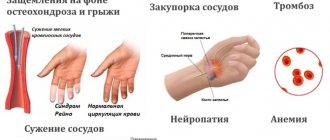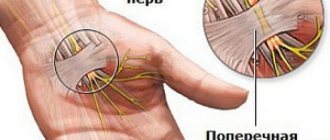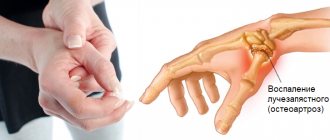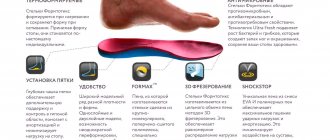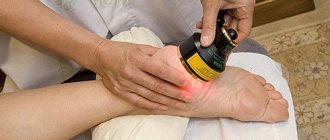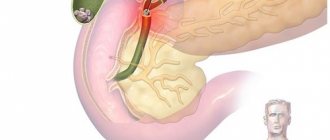Numb toes: reason
- Disorders of nerve conduction and blood supply.
- Degenerative changes in the musculoskeletal system.
- Tumors compressing the nerve plexus, spinal cord.
- Inflammatory diseases of the joints (accompanied by puffiness and pain in them).
- Alcohol addiction (leads to chronic edema).
- Pathological processes in the lower extremities.
- Lack of minerals and vitamins (eg B12 and calcium).
- Long-term smoking (impairs blood circulation).
Internal causes of finger numbness
Not only external factors, but also reasons within the body itself, directly related to health, can lead to numbness in the fingers. Everything in the human body is interconnected. If a nerve is pinched in one organ, this can affect other organs. For example, if the toes of your right foot go numb, then the reason may not be there, but in a completely different place.
The feet and toes may go numb due to the following pathologies:
- lack of vitamin B12 (cyanocobalamin), which is involved in the creation of nerve fibers. With its deficiency in the body, nervous system disorders may begin, accompanied not only by numbness, but also by dizziness, general weakness, and irritability;
- osteochondrosis of the lumbar region. If the sciatic nerve is injured, its branches are often damaged. Because of this, the legs begin to hurt, their muscles become flabby, and an unpleasant sensation of “goosebumps” occurs, which precedes numbness;
- neuromas. With it, the nervous tissue grows and becomes a benign formation, which can be transferred to other areas;
- intervertebral hernia. When the discs wear out, they pinch nerves and blood vessels, impairing overall blood flow. Numbness begins in the big toe, which hurts when walking;
- neuropathy. With elevated sugar levels in diabetic patients, the nerves and blood vessels of the lower extremities can be injured. There is a burning and tingling sensation on the skin, accompanied by pain;
- atherosclerosis. The passage of blood through all vessels, including the vessels of the extremities, is hampered by cholesterol plaques. Due to impaired blood supply, the toes begin to freeze and lose sensitivity. Their skin turns pale.
What does a person feel?
Numbness (paresthesia) is experienced subjectively. For example, as one of the manifestations listed below, any combination or complete complex.
- Loss of sensation.
- Burning.
- Inability to move fingers or bend them.
- Tingling with thousands of “needles”.
- Goosebumps.
- Itching.
- Discomfort.
Whatever the sensation, if a person’s toes are numb, treatment should be preceded by an adequate examination that will help identify the underlying causes of the disease.
Why can the tips of my toes go numb?
Factors contributing to the development of paresthesia (decreased sensitivity) may include:
- injuries, including minor ones (for example, due to wearing shoes that are too tight);
- neurological disorders, in particular after head or spinal injuries;
- spine pathologies;
- spinal cord injury;
- nerve compression;
- circulatory disorders, vascular diseases;
- endocrine pathologies;
- joint diseases.
It must be taken into account that diseases can be combined. For example, decreased sensitivity can be caused simultaneously by a disease of the spine and circulatory disorders.
Numb toes: treatment
After making a diagnosis, the doctor prescribes an individually developed correction scheme. Most often it includes several stages.
- Pharmacological effects (muscle relaxants, non-steroidal anti-inflammatory drugs).
- A course of manual techniques (restoring blood supply, regulating communication between the nervous periphery and the center).
- Physiotherapy (heating, electrophoresis, SMT, etc.).
- Exercise therapy (relieves muscle tension, tension, improves blood supply to organs).
- Mud wraps (with a lack of microelements, inflammation in the joints).
- Underwater traction of the spine (if there are hernias, protrusions of intervertebral discs, etc.)
- Acupuncture (acts on biologically active points - the projection of the main internal organs and systems).
Treatment of paresthesia
Treatment of diseases that cause numbness in the toes depends on the causes of their development. In general, the treatment plan for most of these pathologies is similar:
- taking medications;
- physiotherapy;
- massage;
- physiotherapy.
If abnormalities are detected at an early stage, it is often possible to do without taking medications. At later stages of the development of joint pathologies, as a rule, anti-inflammatory, analgesic and decongestants, muscle relaxants and chondroprotectors are prescribed.
Physiotherapy improves blood circulation and metabolic processes, relieves pain and excessive muscle tension. Laser treatment, heating, electrophoresis, magnetic therapy and other procedures are usually used. Exercise therapy and massage are necessary to restore joint functions, increase muscle tone and volume, improve blood flow and eliminate compression of nerves. In some cases, you may also need to wear orthopedic shoes. To prevent loss of sensitivity in your toes, you need to choose a healthy diet, give up bad habits, exercise regularly and wear properly fitted shoes. This will avoid the development of articular and vascular pathologies and maintain normal sensitivity and mobility of the foot.
Why you should never rely on treatment with folk remedies for such a phenomenon
Carrying out self-medication by using recipes from folk sources can cause a worsening of the situation, the transition of the pathology to a chronic form and the development of complications. Even if it is possible to reduce the intensity of pathological sensations, the disease continues to progress.
The use of folk remedies without the consent of a doctor is not recommended because:
- they can have many contraindications and lead to the development of adverse reactions (this is especially true for oral medications);
- products for external use can provoke the development of serious allergic reactions;
- The effectiveness of traditional treatment may decrease.
Diagnostics
The process of diagnosing numbness of the thumb of the lower limb includes the use of instrumental and laboratory examination methods.
Analyzes
The table below shows the main types of tests that will need to be taken to determine the causes of loss of sensation in this part of the leg.
| Laboratory examination method | Purpose of analysis and cost |
| Clinical analysis |
|
| Biochemical research | Carrying out a biochemical blood test is necessary in order to obtain information about the presence or absence of infectious microorganisms in the patient’s body, and to determine the level of hormones and substances that can cause intoxication. The average price for performing this analysis is 800 rubles. |
| General urine analysis | This method of laboratory diagnostics is carried out to obtain general information about the patient’s health status. The price of a biochemical urine test is about 360 rubles. |
Depending on the accompanying symptoms that the patient has, the doctor may decide to prescribe additional tests.
Instrumental diagnostics
The use of hardware diagnostic tools allows you to obtain a more informative examination result displaying the functional state of the blood vessels of the leg, its peripheral nerves and other parts of the body.
Ultrasound
An ultrasound examination of the lower limb allows you to determine the condition of its arteries, veins, capillaries and peripheral nerves. This type of diagnosis does not require special preparation, is completely painless and is performed within 20-30 minutes. The average cost of ultrasound of leg vessels is 2100 rubles.
X-ray of the spine
This diagnostic method allows for a detailed examination of the bone tissue of the lumbar spine, to detect possible signs of chronic osteochondrosis, inflammatory-degenerative or oncological process.
The average cost of radiography of this part of the musculoskeletal system is 1,400 rubles.
MRI and CT
Carrying out MRI or CT diagnostics allows the attending physician to conduct a comprehensive examination of the patient’s entire body, studying the functional state of his lower extremities, great vessels, peripheral nerves, all parts of the spine and tissues of internal organs. The average cost of an examination using MRI and CT machines is 18,000 rubles. and 10,000 rub. respectively.
Loss of sensation in the limbs - identifying causes and treatment in Samara
At MK Clinic 4 Management you can consult a neurologist for the treatment of frequent dizziness in adults. Prices for services:
| Name of service | Price |
| Initial consultation with a neurologist | 1600 rub. |
| Repeated consultation with a neurologist | 1000 rub. |
- You can ask questions or make an appointment by calling:
- + (reception).
Neurologists conducting appointments - see the Specialists section.
Loss of sensation in the limbs can often occur when staying in an uncomfortable position for a long time. In addition to the usual numbness, which goes away quite quickly, loss of sensation in the arms and legs may indicate a number of neuralgic disorders.
Why does the thumb on my right hand go numb?
Constant overload of the joints or illness can provoke the appearance of discomfort.
Compressive neuropathy
The pathology is accompanied by weakness of muscle fibers, spasms, decreased sensitivity, and numbness of the thumb. The main causes of its occurrence are pinched nerves of the wrist, elbow joint, forearm or neck, traumatic injuries, dilation of blood vessels, and the formation of cysts.
Peripheral neuropathy
The disease is accompanied by damage to the peripheral nervous system. The clinical picture depends on which nerves are affected. One of the symptoms of the pathology is numbness of the skin on the arm.
The provoking factor may be:
- insulin-dependent diabetes mellitus;
- vitamin B12 deficiency;
- chronic liver and kidney diseases;
- abuse of alcoholic beverages.
Constant load
A feeling of numbness in the hand often accompanies people whose profession involves constant stress on the hand.
The risk group includes:
- artists;
- hairdressers;
- kitchen workers;
- athletes;
- office workers;
- drivers;
- persons performing heavy physical work.
As a result of the daily monotonous load on the hand, a feeling of numbness in the fingers appears. This is due to excess pressure on the median nerve from the bones, transverse carpal ligament and tendons. The development of carpal tunnel syndrome is observed.
Secrets of traditional medicine
Folk recipes for paresthesia of the toes will be useful at the initial manifestation of the disease. Infusions and decoctions of plants that dilate blood vessels and improve the quality of lymphatic and blood flow are effective.
- A collection is used, which includes nettle leaves, young viburnum bark, sweet clover, parsley seeds, and tricolor violet. Prepare the decoction according to the recipe, maintaining the proportions. Take daily after meals.
- Infuse celery and valerian and dubrovnik root in natural red wine, add honey. Use to strengthen the immune system and improve cerebral circulation.
- Millennial grass, horse chestnut bark, flowering primrose, and sweet clover stems will serve as a mixture for foot baths.
Homeopathic remedies using fly agaric, ergot, and ginkgo leaves are known. The recipe is given without an exact indication of the required number of components specifically, since self-medication in case of numbness of the tips of the toes is unacceptable, as is treatment without establishing a diagnosis.
Numbness of the fingertip can be transient or permanent. The first is temporary, appearing from external factors, and quickly disappears after their elimination. The second is a symptom of various diseases, a sign of pathologies of the musculoskeletal system, cerebral cortex, spine, heart, blood vessels, nervous system, and mental disorders. Requires a thorough examination of the whole body and immediate drug treatment.
It is difficult for a beginner to recognize the types of paresthesia and assess the degree of risk. You need a consultation at a neurological center. Numbness of the fingers is an indicator of severe pathologies that are easier to prevent or treat without waiting for disability or death.
What do doctors advise?
To avoid discomfort associated with the development of joint diseases, it is recommended:
- adhere to the correct diet, enriching it with foods containing many vitamins and minerals, and avoiding fatty, salty and spicy foods;
- avoid drinking alcoholic beverages;
- avoid hypothermia;
- do not “crack” your joints;
- perform gymnastic exercises at least twice a day; if a person leads a sedentary lifestyle, they are repeated every hour for 10 minutes.
Drug treatment helps eliminate inflammatory processes in tissues and normalizes blood circulation. To relieve swelling, diuretics are prescribed, which at the same time also reduce the intensity of pain.
In addition to traditional treatment, recipes from folk sources can also be used. For example, to combat Raynaud's syndrome, it is recommended to increase the intake of vitamin C. For this purpose, take ascorbic acid, citrus fruits, and rosehip infusion. You need to avoid physical overload.
Contraindications for MRI
There are a number of circumstances under which tomography cannot be done. But, fortunately, there are few of them, because this method is quite modern and high-tech. Only people with metal structures in the body or those who wear a pacemaker will have to choose other methods of medical examination in order to understand why their fingers are numb. The fact is that these non-removable metal “parts” can negatively affect the magnetic field inside the equipment. That is why those who come to see a doctor are asked to remove their jewelry and watches before taking the desired position on the couch. Diagnostics will run for 40 minutes. Sometimes this time can be slightly shortened or extended - it depends on the patient’s condition and the complexity of his illness.
Usually the result is given immediately. This is a conclusion printed on a sheet of paper and photographs showing the affected area in a “section”. With this in mind, you can visit a general practitioner and, together with him, think through methods of further treatment. Be sure to convey to the general practitioner in detail the information you received from the radiologist - the accuracy of the recommendations provided depends on this. They may be associated with taking medications, global (or not so much) surgical intervention, or undergoing certain procedures (perhaps in a clinic located near your place of residence). The doctor selects several options, each of which takes into account the patient’s condition.
Why does the pad of the right thumb go numb?
The pad of the thumb may become numb during the formation of:
- Raynaud's syndrome. It is characterized by spasm of the blood vessels of the hand under the influence of hypothermia or emotional stress. Numbness is felt from the tip towards the wrist.
- Osteochondrosis of the cervical spine. Symptoms such as tingling or itching, burning, weakness in the hand, shooting pain, and impaired motor function are observed.
- Arthritis is damage to joint tissue.
- Thrombosis of the subclavian artery. Edema processes, hyperemia of the phalanges, their soreness and numbness are observed.
If you experience discomfort, it is recommended not to delay your visit to the doctor; timely treatment will help avoid the development of complications.
Factors of occurrence
Even short-term loss of finger mobility and numbness should not be ignored. Even if the symptoms do not recur in a short period of time, doctors consider such a disorder to be a sign of pathology that requires proper treatment.
Pathological symptoms can be caused by:
- diseases of the spine accompanied by deformations of the intervertebral discs;
- pathological changes in the cervical spine of a degenerative-dystrophic nature;
- traumatic damage to joints;
- prolonged overexertion during sports;
- compression of blood vessels;
- muscle spasms caused by incorrect position of the back and head;
- circulatory disorders;
- the influence of stress;
- stroke.
If there is occasional numbness in the upper limbs associated with incorrect body position during sleep, there should be no concern. If the sensation is caused by a blood supply disorder, you will need to consult a doctor.
Treatment
Pre-hospital assistance
If a spinal cord injury is suspected, spinal immobilization and immediate delivery to a neurosurgical hospital are required. First aid tactics for nerve damage are determined by the nature of the injury. Victims with wounds need to apply an aseptic dressing. For all leg injuries, especially those accompanied by severe swelling, it is necessary to ensure that the limb is in an elevated position. If numbness or increased swelling occurs after fixation with a plaster cast, you should urgently go to the emergency room to cut the plaster.
Conservative therapy
In case of neuropathies, the etiofactor is eliminated if possible. Medicines to improve blood circulation, NSAIDs, and B vitamins are prescribed. For pain, trigger point blockades are carried out. The list of non-drug methods includes ultraviolet irradiation, diadynamic therapy, and UHF. Massage, manual therapy, and physical therapy exercises play a significant role.
For vascular diseases, antithrombotic agents, antispasmodics, vitamins, and medications are recommended to reduce red blood cell aggregation. Intense pain is an indication for the use of painkillers and paravertebral and perirenal blockades. Patients with acute occlusion are administered thrombolytics and anticoagulants.
Non-drug methods for treating vascular pathologies include hyperbaric oxygen therapy, ILBI, ozone therapy, mud applications, magnetic therapy, UHF, medicinal electrophoresis, pearl, radon, and hydrogen sulfide baths. Patients with trophic ulcers undergo dressings and laser treatment.
If there is numbness in the feet due to diabetes mellitus, an adjustment of the insulin dose or transfer of the patient to insulin therapy is required. Drug treatment includes antispasmodics, a-lipoic acid preparations, and infusions of solutions. For ulcerative defects, dressings and antibiotic therapy are indicated.
What consequences can result from delaying seeking help from a doctor?
In the absence of adequate treatment, the pathology progresses and can become chronic. In such a situation, treatment will be lengthy and less effective. If the problem is caused by compression of the nerve fibers, they die, so treatment must begin immediately. In advanced cases, the likelihood of full recovery decreases.
Carpal tunnel syndrome is accompanied by compression of nerve endings as a result of repetitive activities. As you continue to exercise, the situation worsens, and even with treatment, the rate of recovery decreases.
During myocardial infarction, the heart muscle suffers, causing numbness in the fingers of the left hand. The condition poses a danger not only to health, but also to life, because without help it can cause death.
A decrease in the level of sensitivity of the fingers is also accompanied by impaired cerebral circulation. The pathology progresses rapidly and therefore requires emergency care. If not treated in a timely manner, the patient may become disabled or even die.
Why you should always seek help from a doctor if your fingers are numb
Loss of sensation in the fingers usually indicates problems with blood circulation or compression of nerve endings. Only a doctor can determine the cause of discomfort and make a diagnosis based on the results of a number of studies.
It is difficult to independently determine the provoking factor of pathological sensations, because the cause may be:
- osteochondrosis;
- spondylosis;
- polyneuropathy of diabetic origin;
- hypertonic disease;
- IHD;
- cerebral hemorrhage;
- carpal tunnel syndrome.
All these diseases require proper and long-term treatment, because they can lead to the death of the patient.
Taking medications can also cause numbness in the fingers. To deal with the situation, you need a lot of time and knowledge, so it is better to entrust this matter to a doctor.
What treatment is prescribed
To prescribe an adequate treatment regimen, it is necessary to determine the cause of the pathological symptoms.
For this purpose, examinations may be prescribed:
- MRI or CT scan of the brain;
- X-ray of the cervical spine;
- Dopplerography of blood vessels of the cervical spine;
- echoencephalography;
- electroencephalography;
- angiography.
Based on the research results and clinical picture, therapy is prescribed.
Medications that may be prescribed include:
- ointments;
- oral tablets that improve metabolic processes;
- corticosteroids by injection.
In parallel with this, laser therapy, acupuncture, vacuum therapy, and therapeutic exercises are used to reduce the intensity of inflammatory processes, pain and muscle spasms.
If there is no positive dynamics from the completed course of treatment, surgical intervention may be required.
There are many possible causes of numbness in the limbs, we are talking about:
- wearing tight shoes or clothing;
- pinched nerve (problems with intervertebral discs, carpal tunnel syndrome with a pinched nerve in the wrist);
- diabetes mellitus (when small vessels supplying nerves in the limbs are damaged);
- injuries;
- working with vibrating devices;
- alcoholism;
- frostbite;
- staying in an uncomfortable position for a long time;
- cholesterol plaques affecting the blood supply to organs;
- tumors;
- disruption of cerebral blood supply;
- cardiovascular diseases;
- diseases of the spine;
- arthritis and arthrosis;
- endocrine diseases;
- venous stagnation;
- iron deficiency, etc.
Diagnosis and treatment of numbness
If you complain of numbness, you should first contact a neurologist or traumatologist (if the sensations are objectively related to a recent injury). To diagnose the underlying disease, the symptom of which is numbness, the following is prescribed:
- X-ray of the corresponding part of the spine or head, joints
- electroencephalography
- rheoencephalography
- CT or MRI of the brain, spinal cord, internal organs
- Ultrasound of internal organs, uterus and ovaries, heart
- Dopplerography of vessels supplying the brain or limb
- rheovasography
- electroneuromyography
- electrocardiography
- general blood test, blood test for sugar and cholesterol, blood biochemistry, studies of hormones and tumor markers
After diagnosing the causes of numbness, the patient is referred for treatment to an appropriate specialist: a neurologist, cardiologist, nephrologist, gastroenterologist, gynecologist, infectious disease specialist, surgeon or oncologist (or other more specialized specialists). Next, the treatment is carried out not specifically for numbness, but for the underlying disease, so medication courses, surgical interventions and physiotherapeutic measures may differ radically. Also, in different situations, treatment can be carried out according to the doctor’s recommendations at home or in a hospital. In some cases (consequences of serious injury, multiple sclerosis), a rehabilitation course at a rehabilitation center may be required.
To prevent numbness, it is enough to follow the basic rule: the body must receive a sufficient amount of oxygen and nutrients. This is easiest to achieve by following a healthy lifestyle:
- daily walks in the fresh air, preferably jogging, to saturate the blood with oxygen,
- regular physical warm-up to keep muscles toned and return them to normal position after prolonged uncomfortable posture (to prevent pinching of blood vessels or nerve endings),
- complete nutrition, rich in vitamins and other substances necessary for the body,
- fight against excess weight,
- quitting smoking (spasm of arterioles is a typical disease of smokers),
- regular courses of treatment for chronic diseases.
